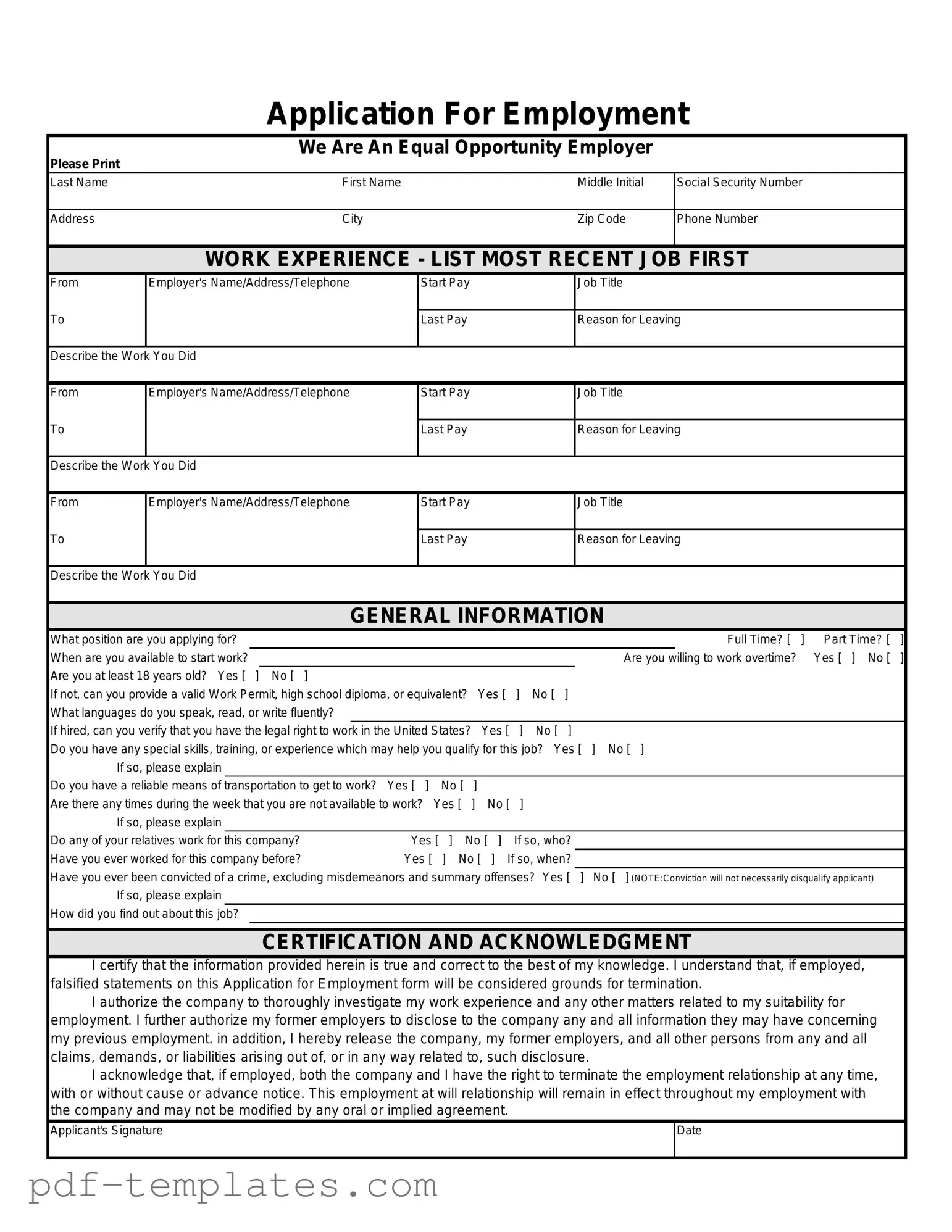The Job Application Form is similar to the Resume in that both documents provide a summary of an individual's work history, skills, and qualifications. A resume typically highlights relevant experiences and accomplishments in a concise format, while the Job Application Form includes specific prompts that guide applicants to provide detailed information about their employment history, education, and personal details. Both documents serve the purpose of helping employers assess a candidate's suitability for a position.
The Cover Letter shares similarities with the Job Application Form as both are often submitted during the hiring process. A cover letter allows the applicant to express their interest in a specific position and elaborate on their qualifications in a personalized manner. In contrast, the Job Application Form focuses on factual information and structured responses. Together, they create a comprehensive picture of the candidate for potential employers.
The Employment History Form is another document that parallels the Job Application Form. Both documents require applicants to provide detailed accounts of their previous employment, including job titles, responsibilities, and reasons for leaving. However, the Employment History Form may be more focused solely on past job experiences without the additional personal information typically found in a Job Application Form.
In the complex interplay of legal documents, it's essential to understand that a cease and desist letter form, especially within Florida law, embodies a formal request for individuals or entities to cease alleged illegal activities, serving as a critical preliminary step before seeking legal recourse. This document not only emphasizes the complainant's serious intent but also sets the stage for potential litigation if the recipient fails to comply. For those looking to draft such a letter, resources like All Florida Forms can provide invaluable templates and guidance.
The Federal Employment Application is similar in structure and purpose to the Job Application Form. It is used specifically for positions within the federal government and includes sections that ask for personal information, work experience, and qualifications. Both documents require applicants to certify the truthfulness of their responses, thereby ensuring that employers can trust the information provided.
The Online Job Application is akin to the Job Application Form in that it gathers essential information from candidates. While the Job Application Form is often a physical document, the online version allows for digital submission. Both formats ask for similar details regarding employment history, personal information, and qualifications, making them interchangeable in purpose.
The Job Offer Letter can also be compared to the Job Application Form, though they serve different stages in the hiring process. The Job Offer Letter is issued after an applicant has been selected and outlines the terms of employment, including job title, salary, and start date. In contrast, the Job Application Form is the initial step where candidates express their interest in a position and provide necessary details for consideration.
The Candidate Profile Form is another document that resembles the Job Application Form. It collects information about a candidate's skills, experiences, and qualifications, similar to the sections found in the Job Application Form. However, the Candidate Profile Form may also include assessments or questionnaires that evaluate a candidate’s fit for a specific role or company culture.
The Background Check Authorization Form is related to the Job Application Form as it is often required during the hiring process. While the Job Application Form gathers information about the applicant, the Background Check Authorization Form specifically requests permission to conduct a thorough investigation into the applicant's criminal history, employment verification, and other relevant background checks. Both forms are essential for ensuring a candidate's qualifications and suitability for employment.
The I-9 Employment Eligibility Verification Form is another document that shares a connection with the Job Application Form. While the Job Application Form collects general information about the candidate, the I-9 Form specifically verifies an individual's eligibility to work in the United States. Both forms require personal information and are crucial for the hiring process, ensuring compliance with employment laws.
